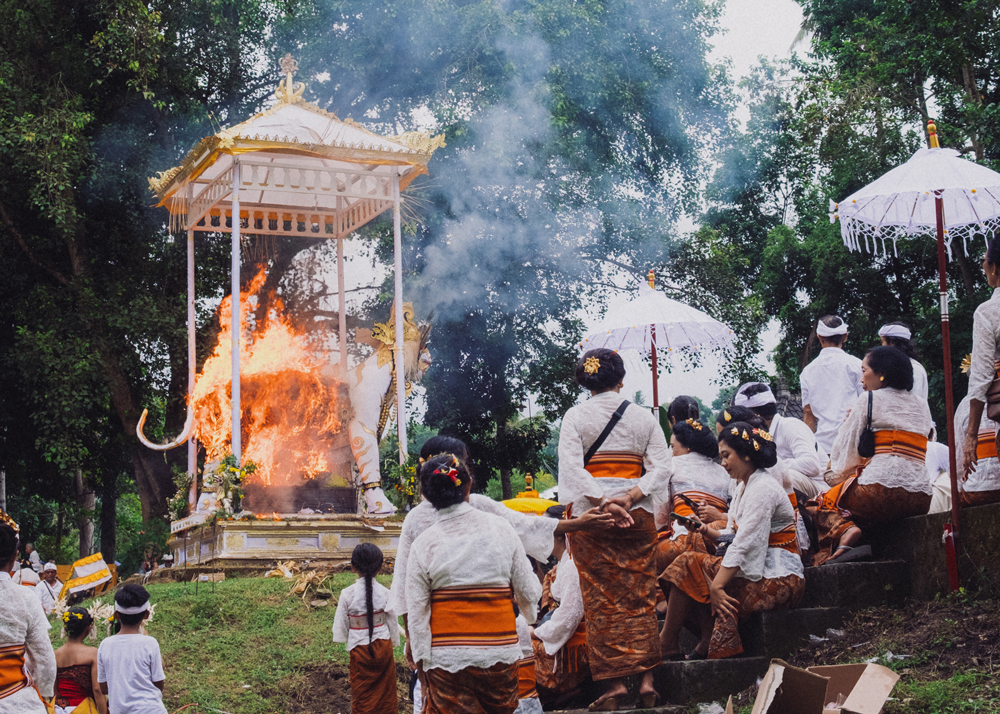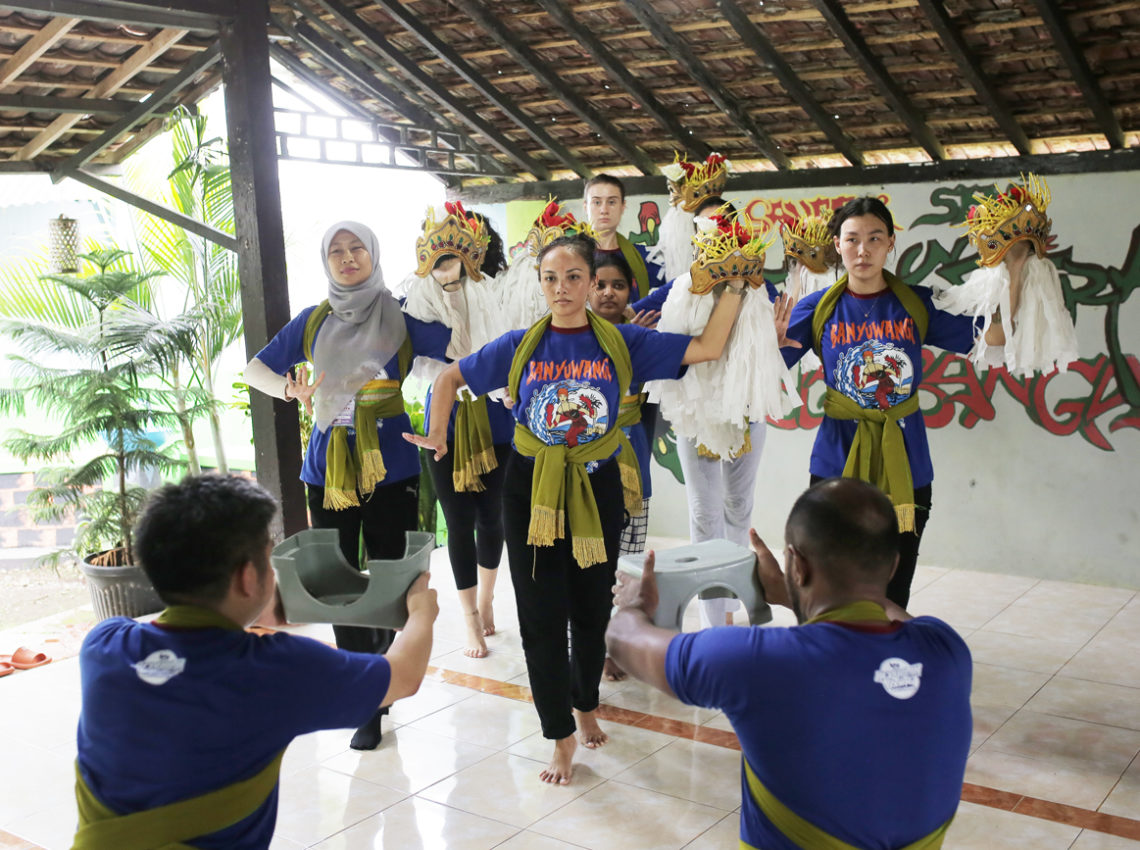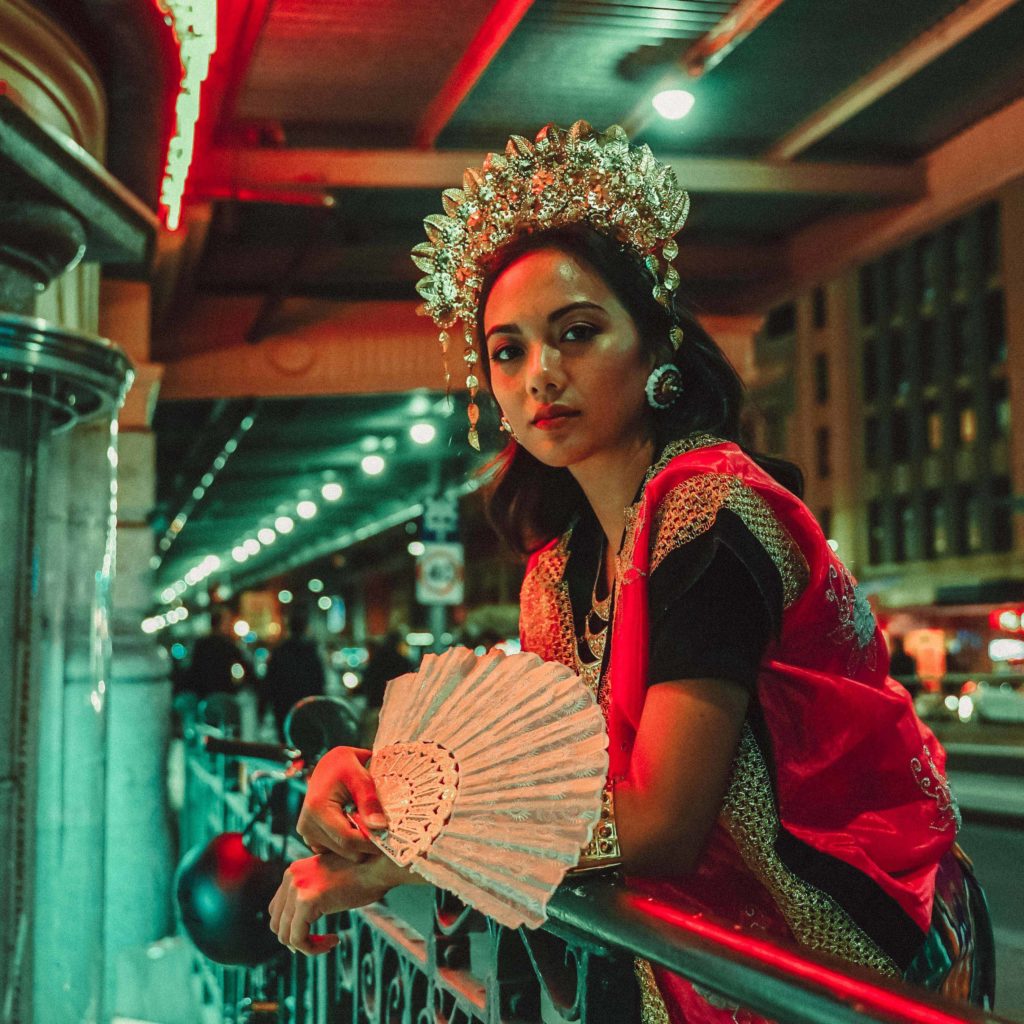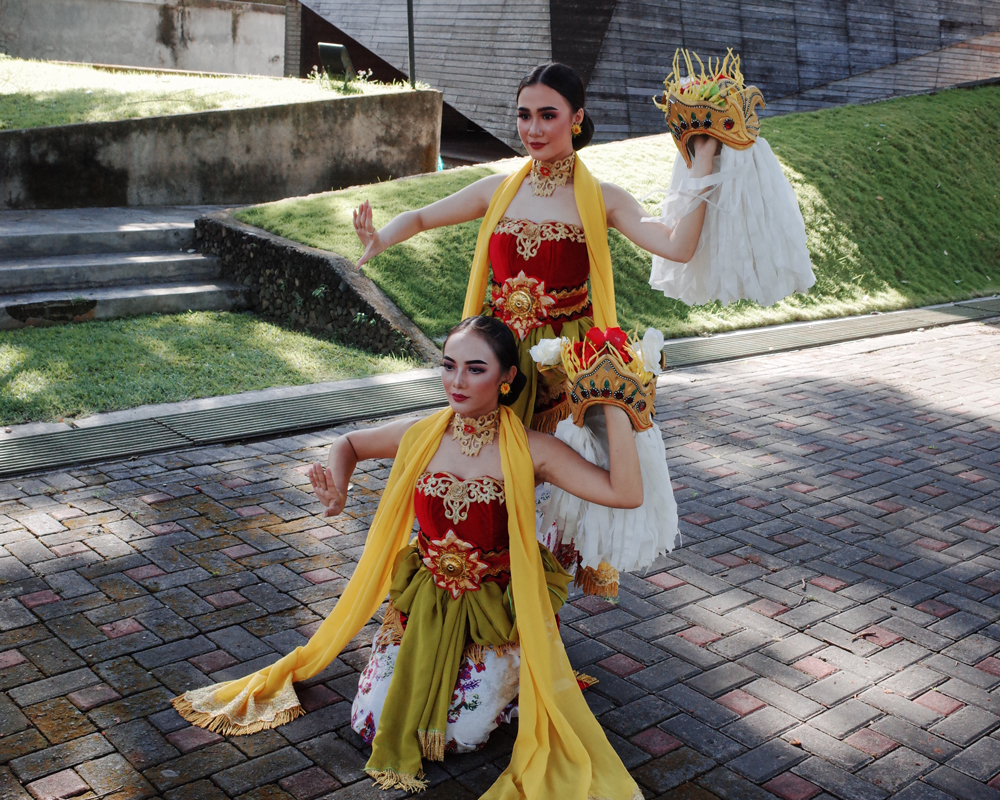
Tari Kembang Bakung is a traditional Indonesian dance from Banyuwangi, East Java. The dance finds its inspiration in the ancient Hindu Seblang Bakungan ritual, originating from the Bakungan region of Banyuwangi, and possesses a rich history dating back to the 1600s. Although the majority of the Bakungan region today has embraced Islam, the Seblang Bakungan ritual is still performed today, to purify the village and ward off evil energies and spirits, as well as to show their gratitude for the blessings their creator has given the village. The ritual includes a mystical dance. During this dance, the performer, usually a woman in her 50s, enters an altered state of consciousness or trance, seemingly possessed by an ancestral spirit, accompanied by gamelan music and rhythmic drumming.
As part of my two and half month stay in Banyuwangi with Sanggar Lang Lang Buana for the Indonesian Arts & Culture Scholarship (IACS/BSBI) program, I was fortunate to learn Tari Kembang Bakung as part of the program, as this dance was choreographed by our teacher, Ibu Ratna Dwi Astuti of Lang Lang Buana. Being situated in the Bakungan region, I also had the opportunity to witness the Seblang Bakungan ritual in person. A rare opportunity as this ritual is only performed once a year in this particular village, following the celebration of Idul Adha.
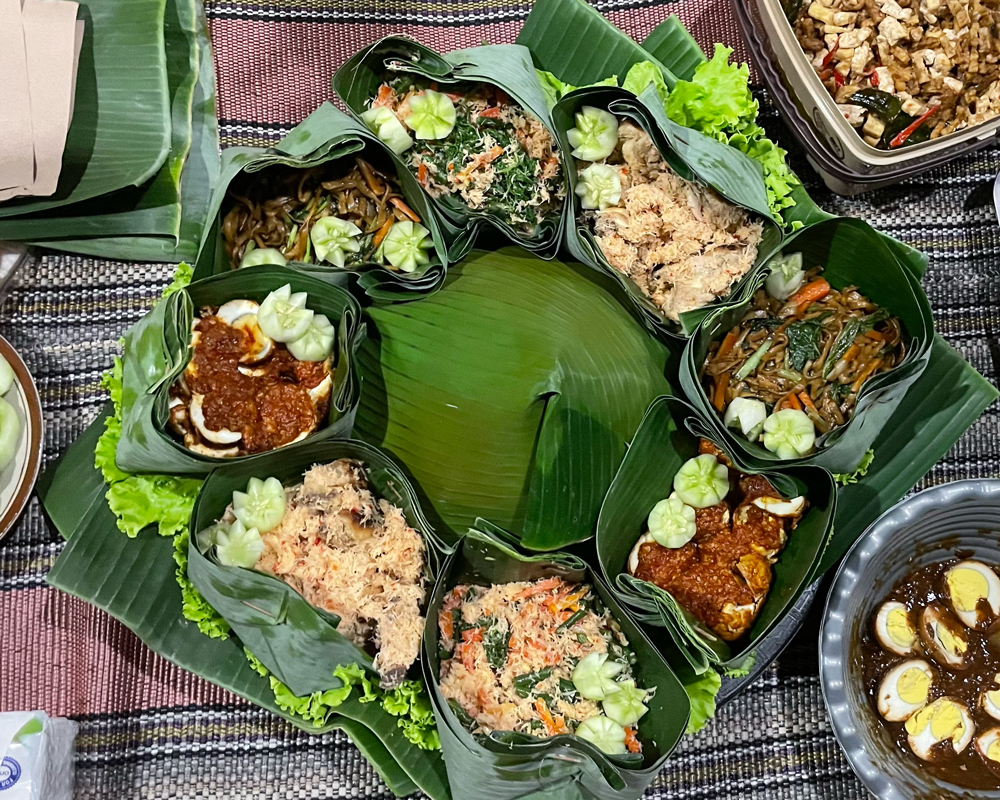

Traditional processions of the Seblang ritual
The Seblang Bakungan ritual involves the entire Bakungan village community to come together. Before the ritual night, the residents of Bakungan pay a visit to the graves of the previous Seblang dancers, seeking permission to continue the tradition. Through a collaborative effort known as gotong royong, they collectively prepare for the ritual performance. On the night of the ritual, we were invited to Sanggar Lang Lang Buana to participate in the Selamatan Massal tradition. This tradition involves the entire village preparing Nasi Tumpeng in their respective homes, accompanied by Pecel Pitik & Urap, and sharing the meal with their families and friends. Traditionally, it was explained to me that the village would turn off all lights, and pray together with the local mosque before cutting the Tumpeng. However, on this particular night, the decision was made to keep the lights on during the prayer.
Taking part in the traditions
Once we had finished our meal, we walked down to the heart of Bakungan, where the Seblang ritual was about to unfold. Along the way, we strolled past local homes where villagers were still enjoying their Nasi Tumpeng and Pecel Pitik meals together. Witnessing the community gathering in this way was a heartwarming sight. Once we arrived, we were given front-row seats to watch the ritual in full view. On my left was the gamelan, ready to play for the Seblang dancer, and to my right I could see offerings for the spirits. The area was filled with children and families from the village, all eager for the Seblang dancer to appear.
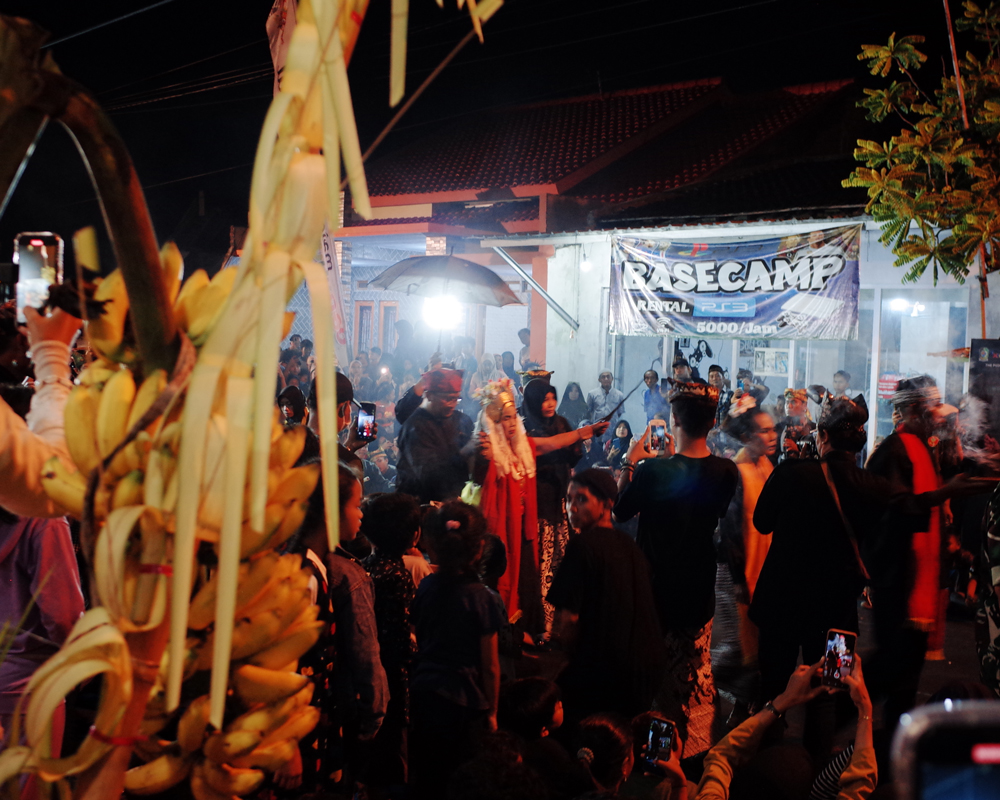
I saw it with my own eyes
The Seblang dancer made her way through the many spectators, her eyes shut and seemingly already in a trance. She held a Keris, a traditional dagger, in each hand and sat in front of a table adorned in offerings for the spirits. From within the crowd, dukuns, tribal shamans, carried in roosters and thick smokey incense, which they covered the roosters with, before a ceremonial cockfight, which symbolised sacrifice. Following the cockfight, the Seblang dancer, with her eyes still shut, put down her keris and was guided towards the gamelan by a dukun and a woman. In front of the gamelan she began an improvised dance, which is said to be the movements of the spirit possessing her, controlled by the dukun, her movements were strange, slow and sometimes erratic. After the dance, she picked up a tray of flowers and walked amongst the villagers, who threw money at her in a frenzy, in exchange for flowers. People pushed and pulled, and some took handful, because it is said that purchasing a flower from her will bring luck and good fortune, and the more flowers, the more blessings.
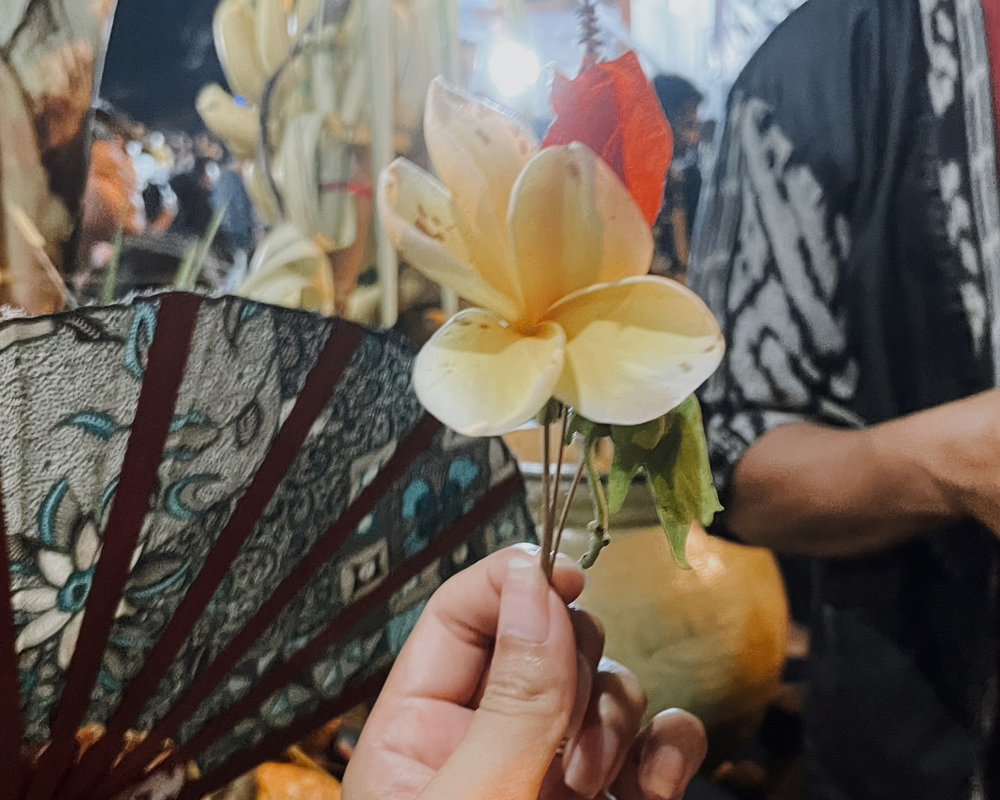
Unfortunately, we couldn’t stay to witness the entire ritual, due to an early start the next morning, so we left around 10pm. Typically, the Seblang dancers stay possessed in this state of trance, with their eyes shut the whole time, until around midnight.
was the seblang dancer actually possessed?
While watching in person I wasn’t entirely convinced that the Seblang dancer was truly in a state trance or possessed, however back at my homestay, I found a livestream of the event on YouTube. I watched the stream until the ceremony ended, rather abruptly at around 11:30pm. As the Seblang dancer had her back turned to the offerings, a man climbed up and stole a durian fruit hanging from an awning, this action instantly prompted the Seblang dancer to pick up her Keris and hastily walk away. And just like that, the ceremony ended – I didn’t think much of it at the time, just that it was weird. The next day I was told, that people stealing offerings before the ritual’s conclusion, might anger the spirit inside the dancer. This could lead to the sudden end of the ritual. Having been told that I was amazed – how could she have seen that someone had stolen an offering behind her? It left me with many questions, that’s for sure, and curious about what the next couple of months will be like for me in Banyuwangi.


